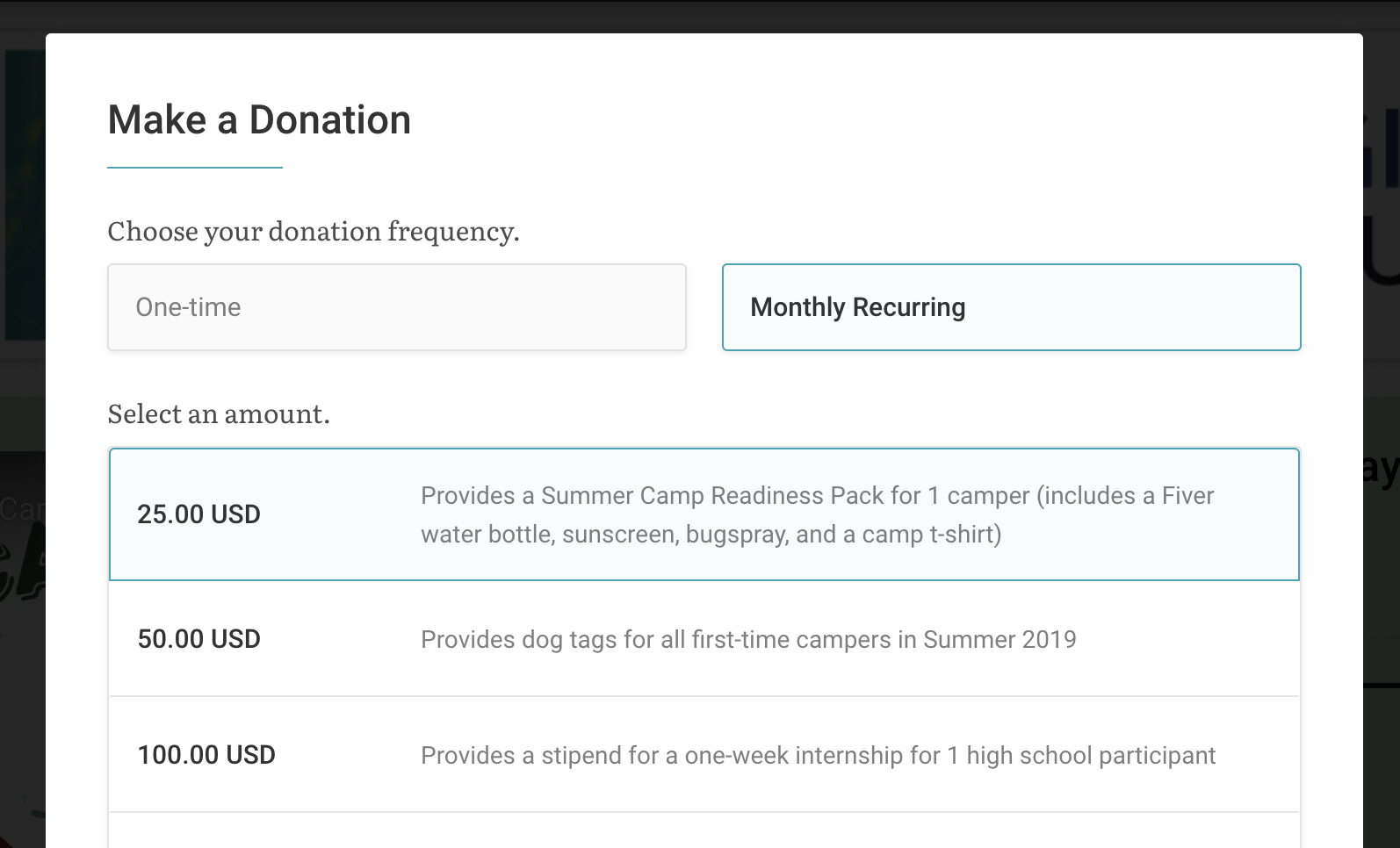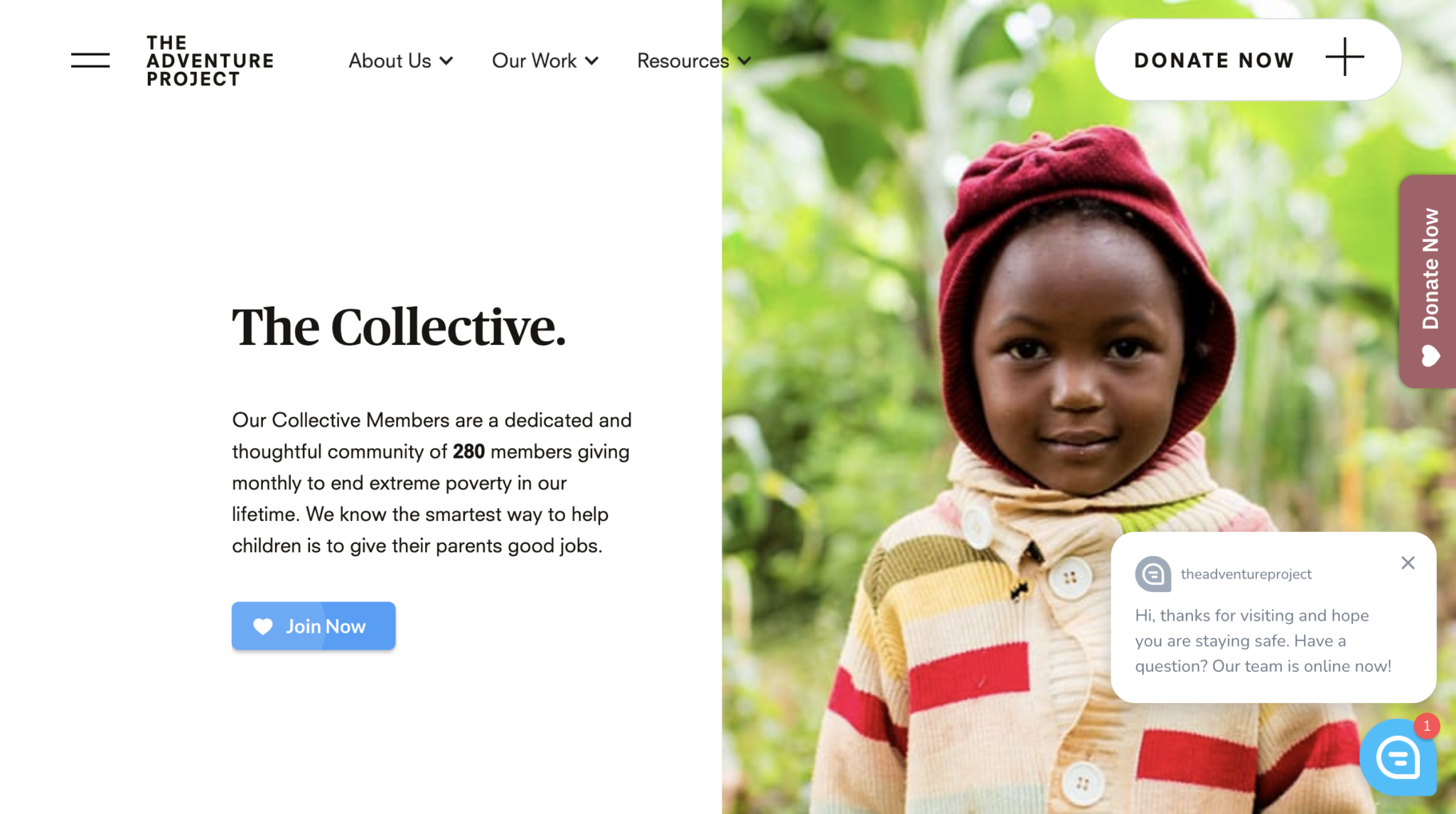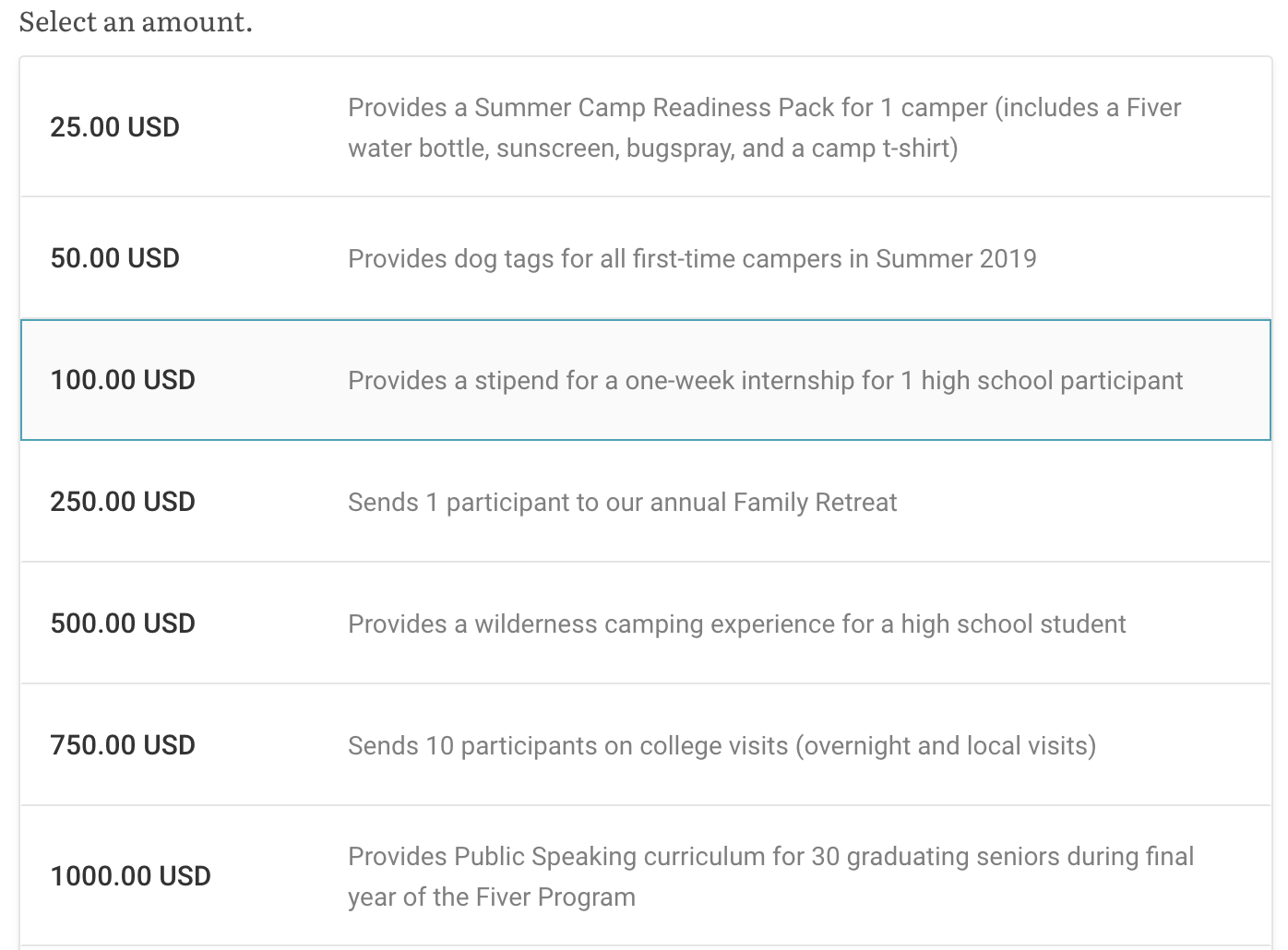For day-long fundraising campaigns like #GivingTuesday, some donor attrition feels almost inevitable. But just because you’re bringing in donations from new donors doesn’t mean their engagement with your cause has to be a one-and-done thing.
If they gave once, it’s because they care about the impact you’re making!
Instead of thinking about their gift as a matter of luck, switch your mindset and consider how you can retain that new donor for campaigns and years to come. Here are four easy, effective ways you can retain your giving day donors immediately.
1. Monthly Giving
Arguably, the easiest way to retain your giving day donors is to entice them to give multiple gifts over the course of the year through your monthly giving program.
Why is this easy? It all comes down to where and how you place the monthly giving “ask.” Most nonprofits use their donation form strategically to include a monthly giving option. For example, Fiver Children’s Foundation has a permanent monthly giving option on their donation form. As soon as a donor types in a donation amount or selects from a preset donation tier, a box with the suggestion automatically appears.

You can also promote a specific monthly giving program after a giving day. For inspiration, check out The Collective, the recurring giving program of The Adventure Project.

Interested in adding a monthly giving option or expanding your recurring giving program? Read this: How To Run Successful Recurring Gift Campaign
2. Email
A donation receipt and automatically generated “thank you” note goes a long way in showing your giving day donors that you 1. acknowledge their gift, and 2. appreciate it. However, it’s high time we move past the email transaction and use this communication tool to foster our personal relationships with donors.
Yes, you should continue to send that automatic email. But after that, add a personal touch. Use email to communicate what’s happening at your nonprofit and inspire them with compelling, emotional stories about your work. Activate your donor by asking him or her to subscribe to your eNewsletter. Direct them to your blog. Send them a message and ask them to provide feedback from the campaign.
Show them that you care, that you recognize their passion, and that they play an integral role in your success.
Perfect your initial emails to new donors with the help of this post: How To Boost Donor Retention With Your Welcome Email Series.
3. Donation Tiers
Some nonprofits avoid donation tiers because they don’t want to put a suggested gift amount out there in the hopes that donors will ultimately give more. That’s understandable. But using donation tiers to connect donors to your mission is a surefire way to help with retention efforts.
Take Fiver Children’s Foundation, for example. They’re online fundraising pros (they run phenomenal #GivingTuesday campaigns, and fundraise year-round), and they’ve mastered the art of the donation tier.

By equating a gift amount with the intended impact, Fiver Children’s Foundation promotes transparency and their organizational efficiency, which are both needed to build trust and assist retention efforts.
If you’re eager to master the art of a donation tier that drives donations, read this: How To Create Donation Tiers That Drive Donations.
4. Reporting
Although some of your giving day donors may not expect a report back on the impact their gift made post-campaign, it’s a vital service that they undoubtedly deserve. How you choose to report back is entirely up to how your organization communicates with donors. Common reporting methods include:
- Blog post on your website
- Blog post on your fundraising site
- Direct mail
- Social media post
If possible, avoid cut and dry statistical reporting. Sure, your donors want to know how much was raised and how many others gave to the campaign, but that’s not what will motivate them to give again.
Focus instead on communicating donor impact. Shoot a video of a client telling a story about their journey and your nonprofit’s role in their future success, take pictures of employees in the field, working to make the world a better place, or find another way to show your donors how they’re a part of it all.
Are you ready to fine-tune your nonprofit impact story? Focus on the hero’s journey! Start with Megan’s post: The Hero’s Journey: How To Write A Compelling Story That Inspires Donors To Get Involved.
Remember, some effort at the beginning of your nonprofit-to-donor relationship has the potential to pay off big time down the road. After all, a once-retained donor is more likely to give again. At the end of the day, retaining your giving day donors is crucial to help expand your base of long-term donors and extend the power of your giving day long into the future.




